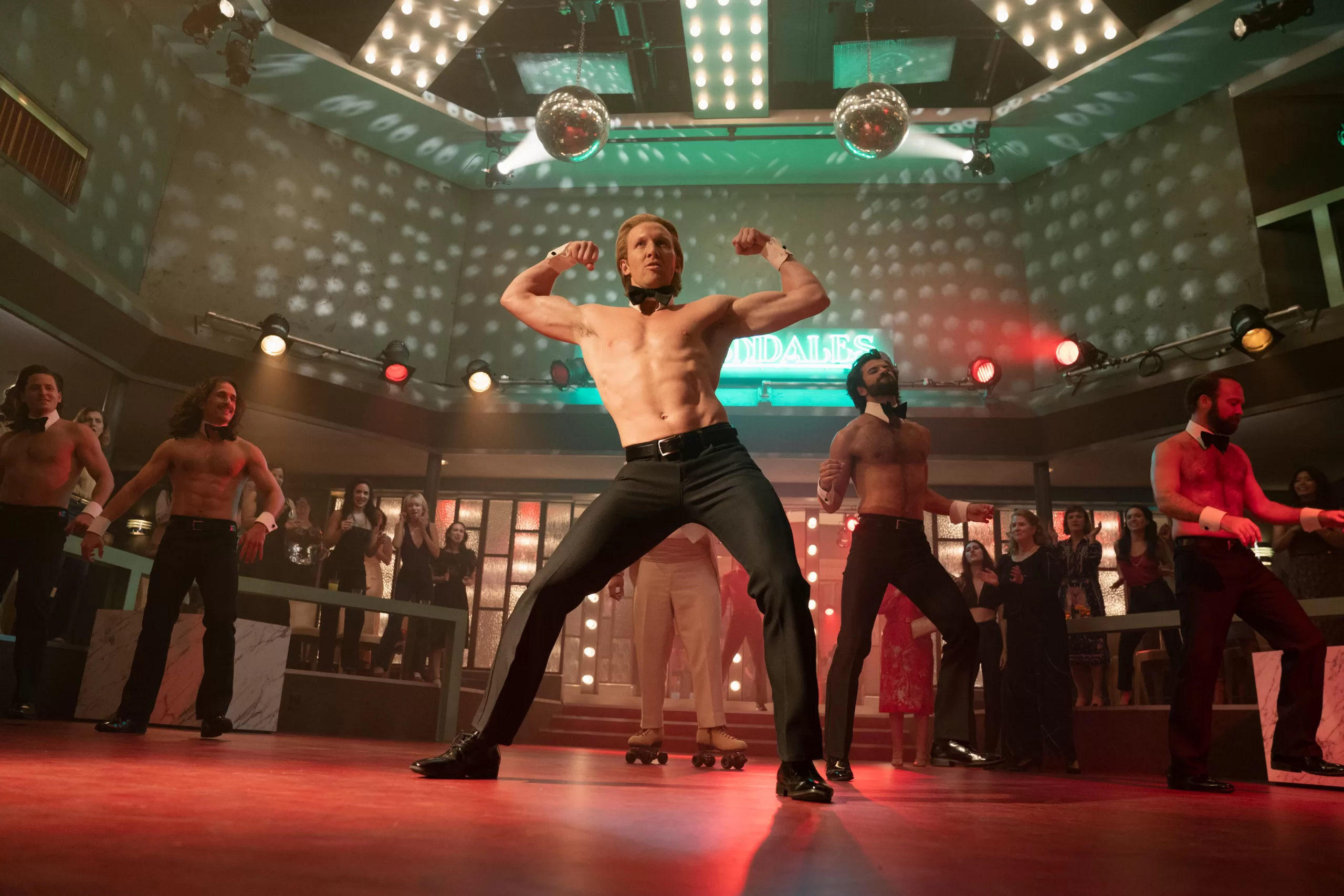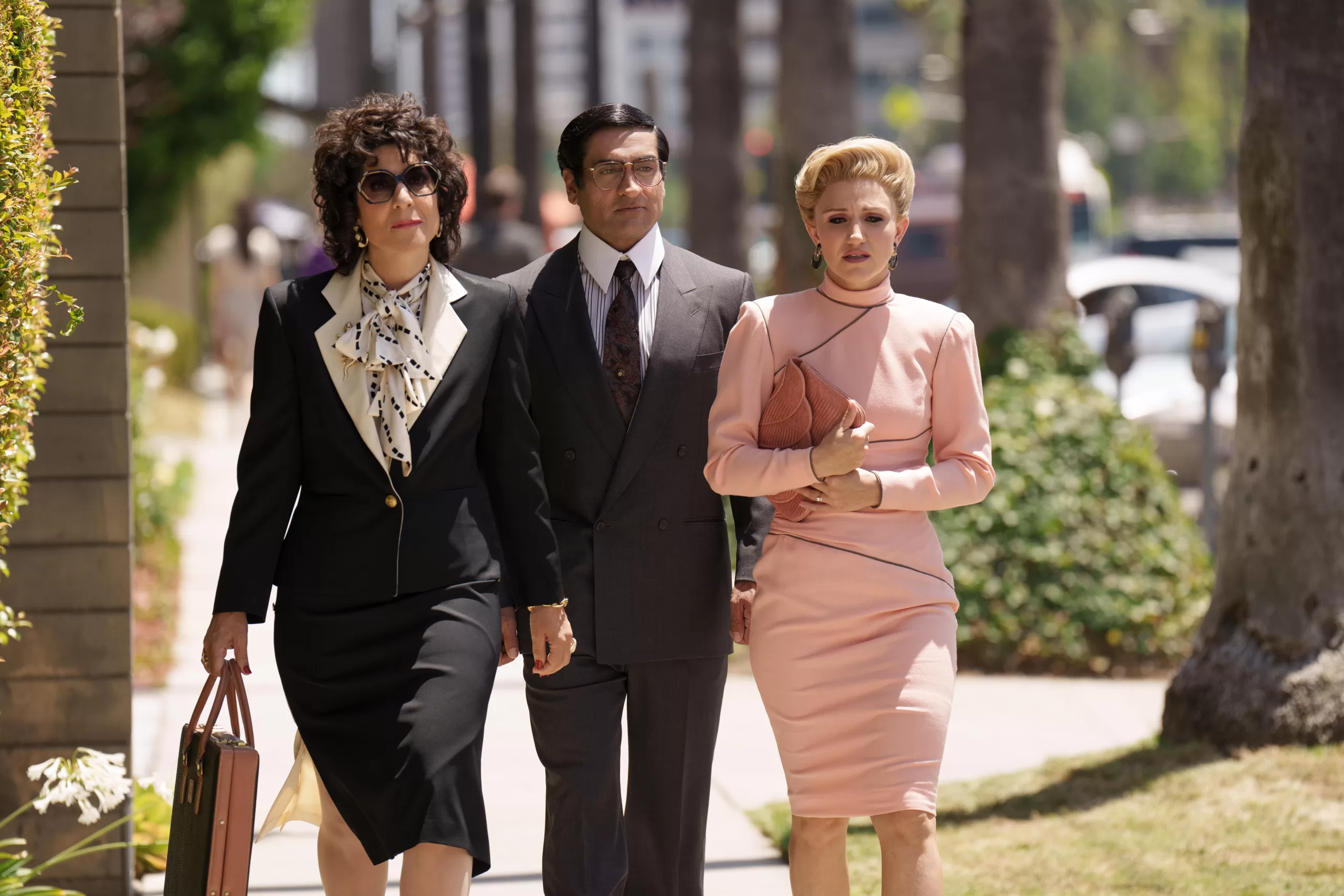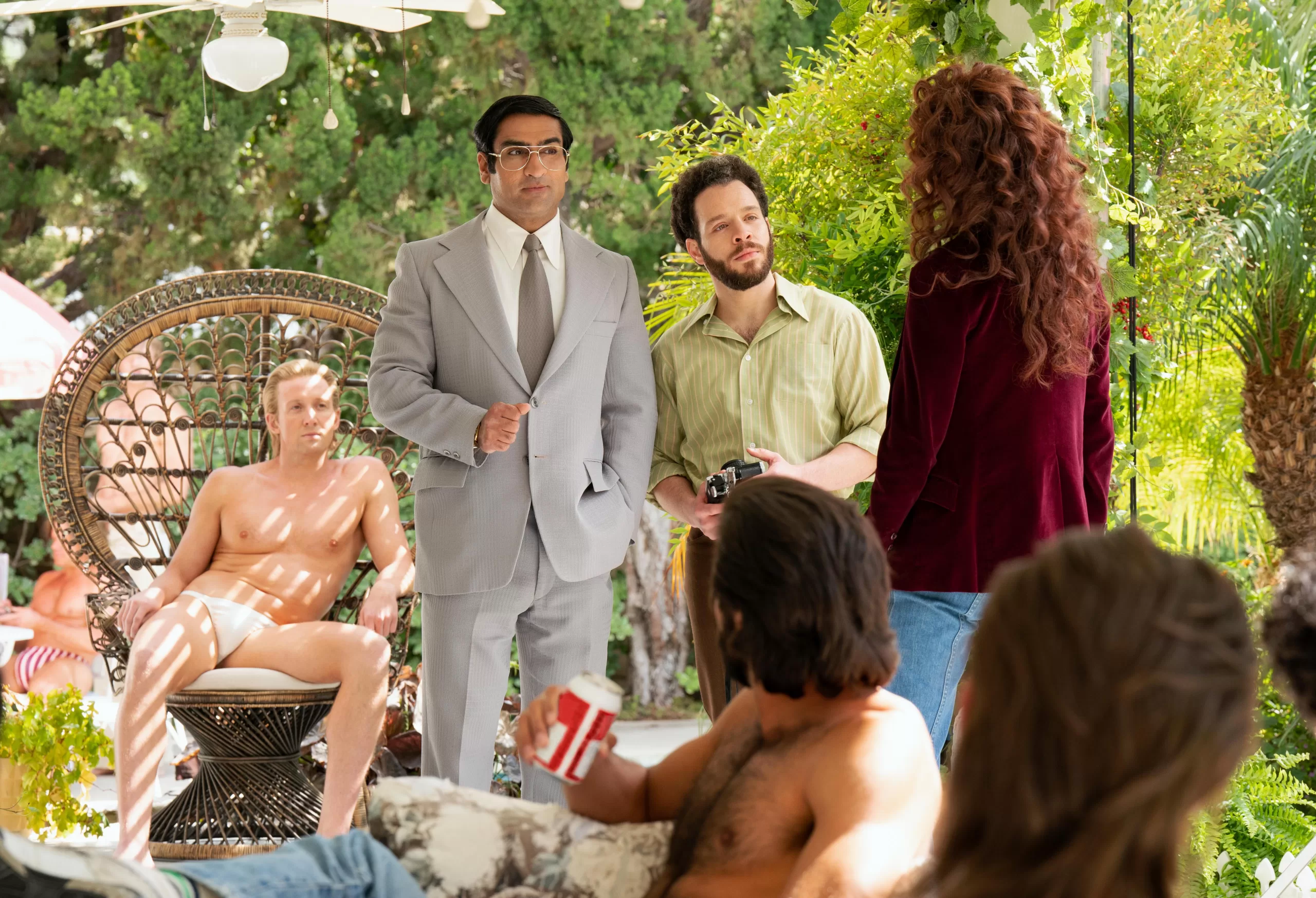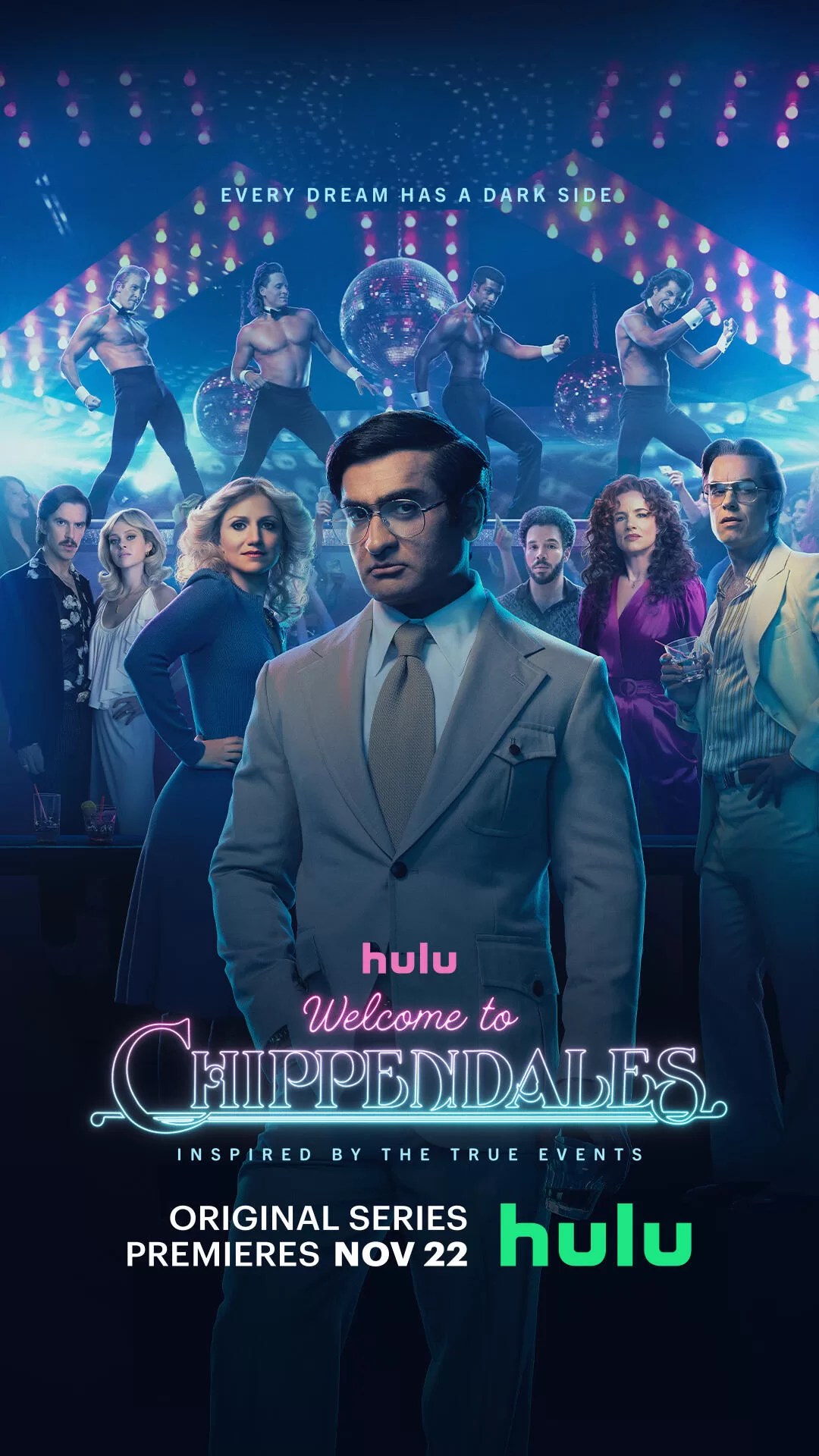Immigrant stories in American media tend to follow certain tropes designed to make us feel good about our melting-pot country, in a Horatio Alger kind of way. You know how it goes: poor in materials but rich in spirit, the underdog climbs the rungs of meritocracy to triumph. Either that or you get doom-and-gloom “issues” tales about how the system is broken.
“Welcome to Chippendales” throws those tropes out the window. It kind of has to since it’s based on the stranger-than-fiction true story, Deadly Dance: The Chippendales Murders by K. Scot Macdonald and Patrick MontesDeOca. In the book, Somen “Steve” Banerjee, an Indian immigrant who went from a gas station employee to Hugh Hefner-esque entrepreneur by catering to the female gaze. But no matter how high he climbs, his insecurity keeps him from recognizing how good he’s got it, ultimately leading to his downfall.

In fact, it’s the contrast between Nanjiani’s “nice guy” affect during the good times and the dangerously brittle anger during the bad ones that make his performance work so well. If you’ve watched any documentaries or footage of the real Banerjee, you’ll find a rather awkward, soft-spoken guy trying too hard to be cool. One that you’d probably dismiss without a second thought. You’d never imagine could be either the gazillionaire capitalizing on ’80s sleaze. Or that he’d become a ruthless criminal who would kill his own golden goose for the sake of his pride.
 Welcome to Chippendales — “February 31st” – Episode 106 — As Steve’s financial woes mount, Nick offers a lifeline in the form of a proposal that would take Chippendales global. A printing error has disastrous consequences for Steve. Cheryl (Jen Cohn), Steve (Kumail Nanjiani) and Irene (Annaleigh Ashford), shown. (Photo by: Elizabeth Morris/Hulu)Though Banerjee ultimately falls into the “bad guy” camp, the show does a good job of exploring how he ended up there. Some of it was from the external pressures of capitalism that, as a brown-skinned man with an accent, he knew were against him. Instead of trying to change anything, he tried to beat it at its own game… to be whiter than a white man, in a way. To lean into racism by discriminating against Black employees and patrons alike, knowing it’s the white clientele who have the power to make him a success. To show off the white man’s markers of success, like the Rolex watch he has his tailor shorten his sleeves to display. To change his name from “Somen” to “Steve” in the first place.
Welcome to Chippendales — “February 31st” – Episode 106 — As Steve’s financial woes mount, Nick offers a lifeline in the form of a proposal that would take Chippendales global. A printing error has disastrous consequences for Steve. Cheryl (Jen Cohn), Steve (Kumail Nanjiani) and Irene (Annaleigh Ashford), shown. (Photo by: Elizabeth Morris/Hulu)Though Banerjee ultimately falls into the “bad guy” camp, the show does a good job of exploring how he ended up there. Some of it was from the external pressures of capitalism that, as a brown-skinned man with an accent, he knew were against him. Instead of trying to change anything, he tried to beat it at its own game… to be whiter than a white man, in a way. To lean into racism by discriminating against Black employees and patrons alike, knowing it’s the white clientele who have the power to make him a success. To show off the white man’s markers of success, like the Rolex watch he has his tailor shorten his sleeves to display. To change his name from “Somen” to “Steve” in the first place.
And some of Banerjee’s downfall came from his own fatal mix of pride and insecurity. Nick De Noia, the arrogant choreographer Banerjee hired to spruce up the male-stripping show, quickly becomes known as the face of Chippendales (he’s even called Mr. Chippendales on national TV). De Noia (played by Murray Bartlett in an appropriately swaggering performance) is everything Banerjee is not: charming, well spoken, classically handsome. Oh, and white. (And a closeted gay man… but hey, a gay white man is still a white man). Had Banerjee listened to his better angels, he might have let De Noia parade around as the company’s public face while driving operations and raking in the cash behind the scenes.
But for Banerjee, it’s not enough to be a success – he has to look it before the entire world. And his inability to do so (which isn’t helped by De Noia’s infuriating hubris and bullying tendencies) eventually causes him to lose everything.

Nanjiani stated in an interview on NPR that he was initially reluctant to take on the role of Banerjee because he didn’t want to portray a brown man as a bad guy. It’s an understandable sentiment in our not-so-enlightened times; it’s too easy for some people to jump from “this one brown man did a bad thing” to “all brown men are bad” or “see, I told you we can’t trust those people.”
He ultimately took the role because he wanted to play a complex character. Even one that ultimately did bad things. He also, recently lamented how there was a lack of villain roles for non-white actors, as putting people of color on pedestals is not the solution to racial inequality in the entertainment or any industry.
Much can be said about the slick production and tense pacing of “Welcome to Chippendales,” which can be a slow burn if you’re looking for plot alone but almost feels too short if you’re examining the deeper layers of Banerjee’s character. But it’s really Nanjiani’s performance that makes the show work. Since his dark turn in the “Twilight Zone” episode “The Comedian,” it’s been obvious that he’s a great dramatic actor (in fact, I’d say he’s a better dramatic actor than a comedian), and “Welcome to Chippendales” allows him to showcase that talent in a fantastic (if disturbing) manner.
All 8 episodes of “Welcome to Chippendales” are available for binge-watching on Hulu.

